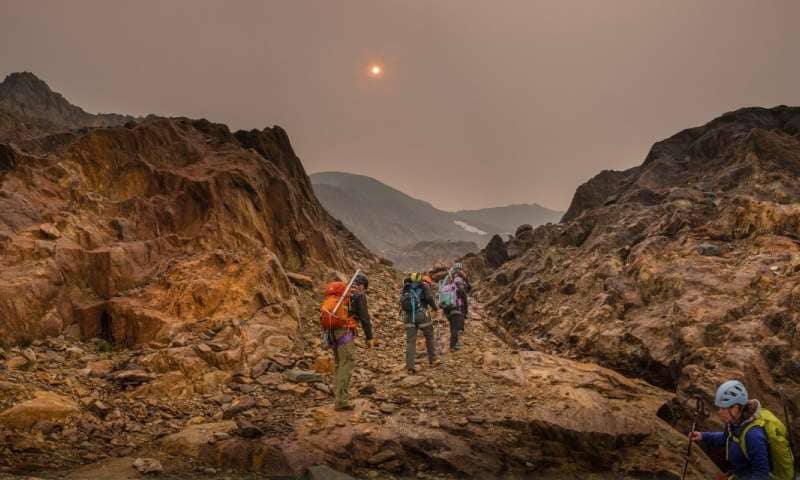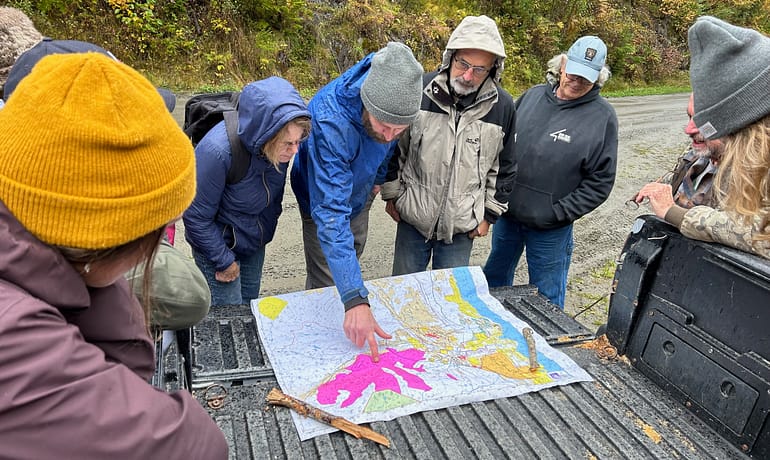Zac Robinson remembers hiking through B.C.’s Monashee Mountains last August and, on a cloudless day, staring directly into the sun.
What made his look upwards a possibility was the smoke collecting from more than 560 B.C. forest fires all burning in unison, making the air quality in Western Canada the most hazardous in the world.
“It was dark and eerie, it was wild, and it shaped our conversations, which turned from the fire and the smoke to how fire is connected to larger processes at work that are pushing change in the alpine,” said Robinson, a mountain historian at the University of Alberta, who was leading a dozen students through a skills course as part of the Alpine Club of Canada’s summer-long general mountaineering camp.
“We would wake up in the morning and brush ash off our tent that had accumulated in the night. Then we would talk about what this material that is just falling everywhere does to glaciers.”
Robinson explained while white snow reflects light, energy and heat really well, the dark elements of the ash do just the opposite. In essence, the forest fires and resulting ash become a “feedback loop for mass wastage of these glaciers.”
It was then that Robinson and former U of A mountain ecologist David Hik decided wildfires were going to be the main focus of the ACC’s 2019 State of the Mountains Report.
In its second year, the annual report is a collection of expert summaries written to raise awareness about the ways a changing climate is transforming the alpine.
The pair, along with fellow editor Lael Parrott, reached out to Lori Daniels, a University of British Columbia conservation researcher, to write an essay on the vital role wildfire has on ecosystem function and how that understanding has exposed shortcomings of past fire suppression and timber production, and how “learning to coexist with wildfire is critical as our society adapts to climate change.”
“Events that a decade ago we would call ‘100-year events’ are quickly becoming the norm,” said Robinson. “Lori talks about ways we can coexist with fire because it is our new reality.”
IMAGE: Haze from wildfire smoke obscures the sun as U of A researcher Zac Robinson leads students on a hike in B.C.’s Monashee Mountains in August 2018. Robinson is one of the editors of a new report focusing on how wildfires are affecting Canada’s alpine regions. Credit: Mary Sanseverino
Related Post
Province increases funding for community forest wildfire risk reduction
News Release We are pleased to announce that the
BC introduces new measures on old growth, innovation, forest stewardship
New announcement on process and funding for policy reforms



